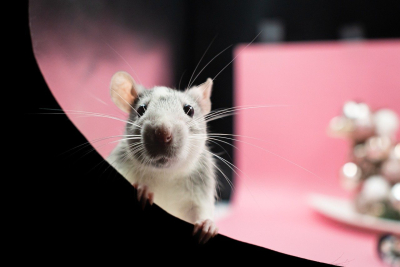The growing impact of AI in education
AI, which simulates human intelligence to perform tasks such as understanding language, problem-solving, and learning from data, has already begun to impact education. Chris Kennedy, the superintendent of schools for the West Vancouver School District in British Columbia, believes that AI will soon lead to a “massive shift” in teaching methods. He foresees AI playing a significant role in easing the workload of teachers, allowing them to dedicate more time to personalized, one-on-one interactions with students.
One of AI's practical applications in the classroom, as noted by Kennedy, is the ability to tailor learning materials to the needs of individual students. For example, AI could help a teacher modify a text to suit different reading levels within a single class. This task, which is currently time-consuming for educators, could be done more efficiently with the help of AI, allowing teachers to focus on more complex and interactive aspects of education.
AI as a personal tutor
One of the most promising uses of AI in education is its ability to act as a personal tutor for students. AI tools can provide real-time, personalized feedback and explanations to students when their teachers are not available. According to Rahul Kumar, an assistant professor of educational studies at Brock University in St. Catharine’s, Ontario, AI’s capability to explain concepts while considering a student's strengths and weaknesses could lead to more effective learning.
For instance, if a student struggles with a math problem at home, they could turn to AI for step-by-step guidance. Unlike generic instructional methods, AI can adapt its explanations to the learner's specific needs, making the learning process more personalized. As a result, students can develop a deeper understanding of the material outside of traditional classroom hours.
This personalized approach is already being implemented in higher education. In 2024, over 100 Canadian universities and colleges are utilizing AI tools developed by companies like Pearson Education. These tools provide students with immediate, individualized feedback when they make mistakes, enhancing the learning experience and encouraging independent problem-solving.
Addressing concerns: responsible AI use in education
Despite the advantages of AI, there are significant concerns about its integration into education. One of the main issues raised by Kumar is the potential for students to misuse AI by having it complete their assignments for them, thereby bypassing actual learning. However, Kumar suggests that this challenge can be mitigated if teachers encourage students to be transparent about how they used AI to assist them. By fostering an environment where students feel comfortable showing how AI contributed to their work, educators can promote responsible use of the technology.
Another concern is the accuracy of AI-generated information. AI tools can sometimes produce flawed or incorrect content, which could mislead students if not properly fact-checked. Kumar emphasizes the importance of verifying AI-generated information with teachers or parents before submitting assignments. This practice will not only ensure that students receive accurate information but also teach them critical thinking and fact-checking skills, which are essential in the digital age.
Perhaps the most significant concern is the fear that AI could replace teachers altogether. While AI can automate certain tasks and provide personalized support, Kumar argues that it cannot replace the human element that is essential to education. Teachers play a critical role in fostering emotional connections, empathy, and guidance, none of which AI can easily replicate. Rather than replacing teachers, AI should be viewed as a tool to support and enhance their work.
The future of AI in classrooms
As AI becomes more embedded in education, its role will continue to evolve. Chris Kennedy and Rahul Kumar agree that AI will significantly reshape teaching and learning, but both emphasize the importance of preparing students to use these tools responsibly. Schools must teach students how to leverage AI for learning while also maintaining academic integrity.
Although concerns about AI’s misuse and its potential to replace human educators are valid, the technology also presents an opportunity to enhance the learning experience and provide students with personalized, flexible support. By integrating AI responsibly, schools can harness its potential while safeguarding the core values of education.
The rise of artificial intelligence in education represents a transformative shift that will inevitably change how students learn and how teachers teach. While AI offers significant benefits, such as personalized learning and real-time feedback, it also raises concerns about academic integrity and the future role of teachers. However, with proper guidelines and responsible use, AI can become a valuable tool in education, helping students succeed while supporting the work of teachers. As the educational landscape continues to evolve, it is essential that schools adapt to these changes, equipping students with the skills they need to navigate an increasingly AI-driven world.
source: CBC


 Cats are the most popular pet in Canada. Despite their affectionate nature, they pose a significant threat to wild birds.
Cats are the most popular pet in Canada. Despite their affectionate nature, they pose a significant threat to wild birds. A powerful cold snap has engulfed central and eastern Canada this week, plunging temperatures far below seasonal averages. The extreme
A powerful cold snap has engulfed central and eastern Canada this week, plunging temperatures far below seasonal averages. The extreme Stress is a constant in modern life. From daily challenges to global issues, people are searching for ways to cope
Stress is a constant in modern life. From daily challenges to global issues, people are searching for ways to cope

